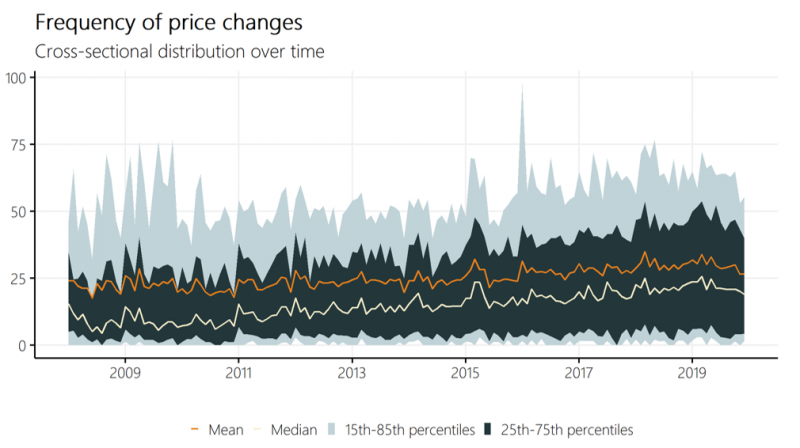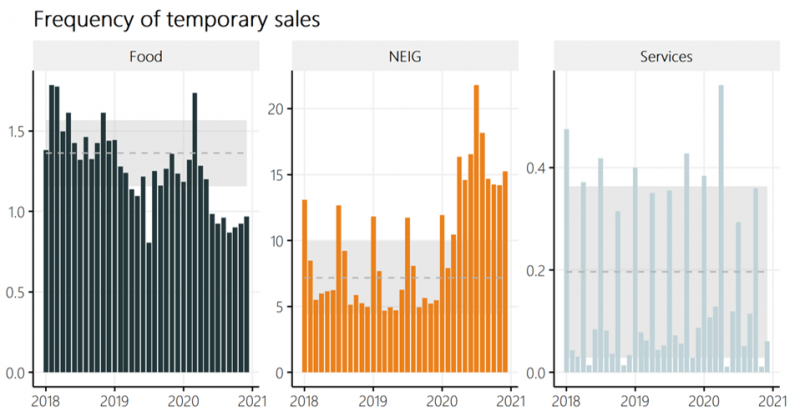

The views, opinions, findings, and conclusions or recommendations expressed in this article are strictly those of the authors. They do not necessarily reflect the views of the European Central Bank (ECB), the Eurosystem, or the Swiss National Bank (SNB). The ECB, the Eurosystem, or the SNB take no responsibility for any errors or omissions in, or for the correctness of, the information contained in this article.


This research relies primarily on quantitative price data. These quantitative price data include the increasingly available microdata underlying consumer and producer price indices or alternative price data sets, such as scanner data or prices collected via the Internet using “web scraping.” Klenow and Malin (2010) and Nakamura and Steinsson (2013) provide a comprehensive overview of micro-price studies and summarize the available microeconomic evidence. The research based on qualitative price data relies on surveys inspired by the seminal work of Blinder et al. (1998) in the United States. Seiler (2022) provides recent results of an ad-hoc survey in Switzerland.